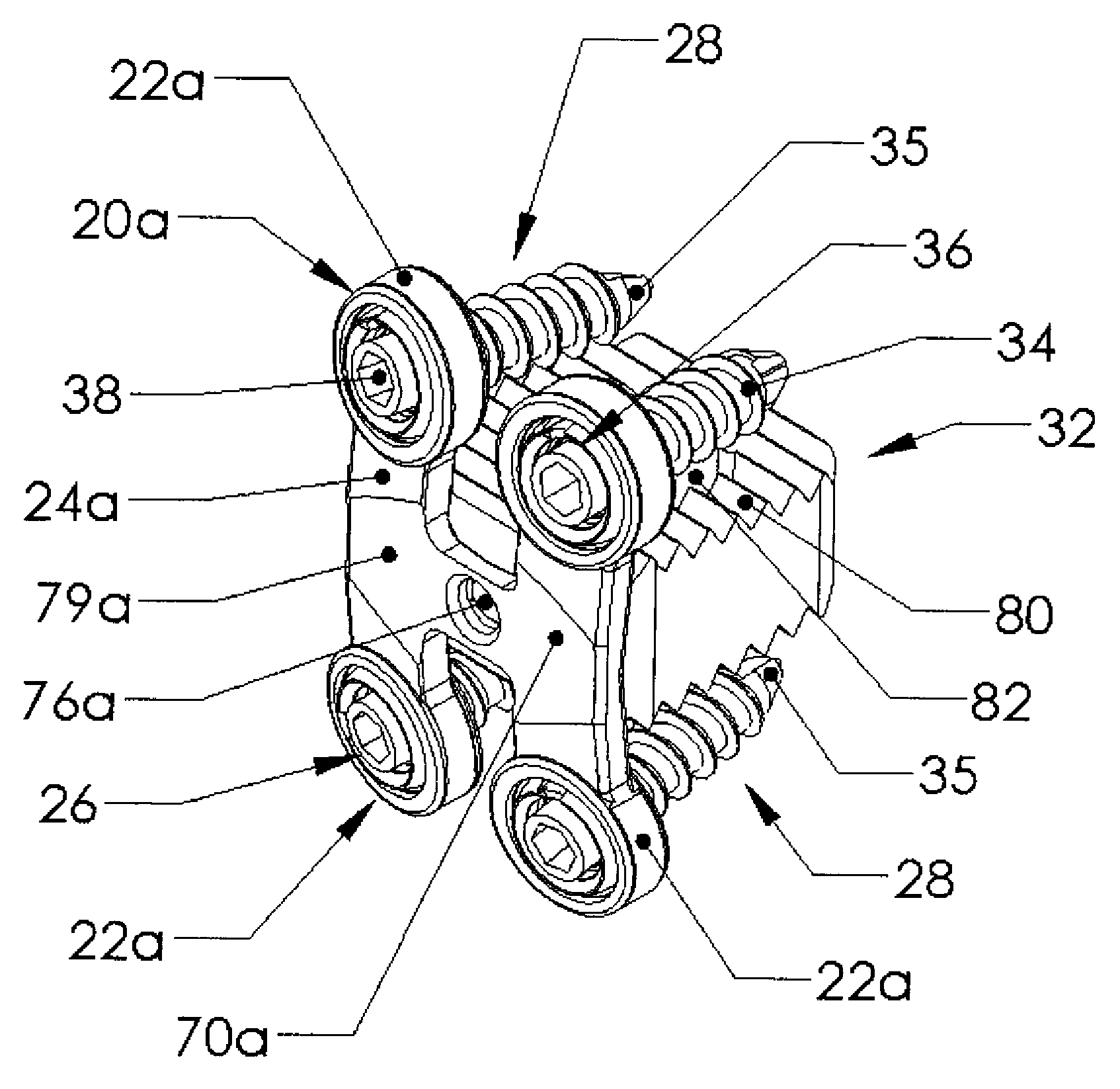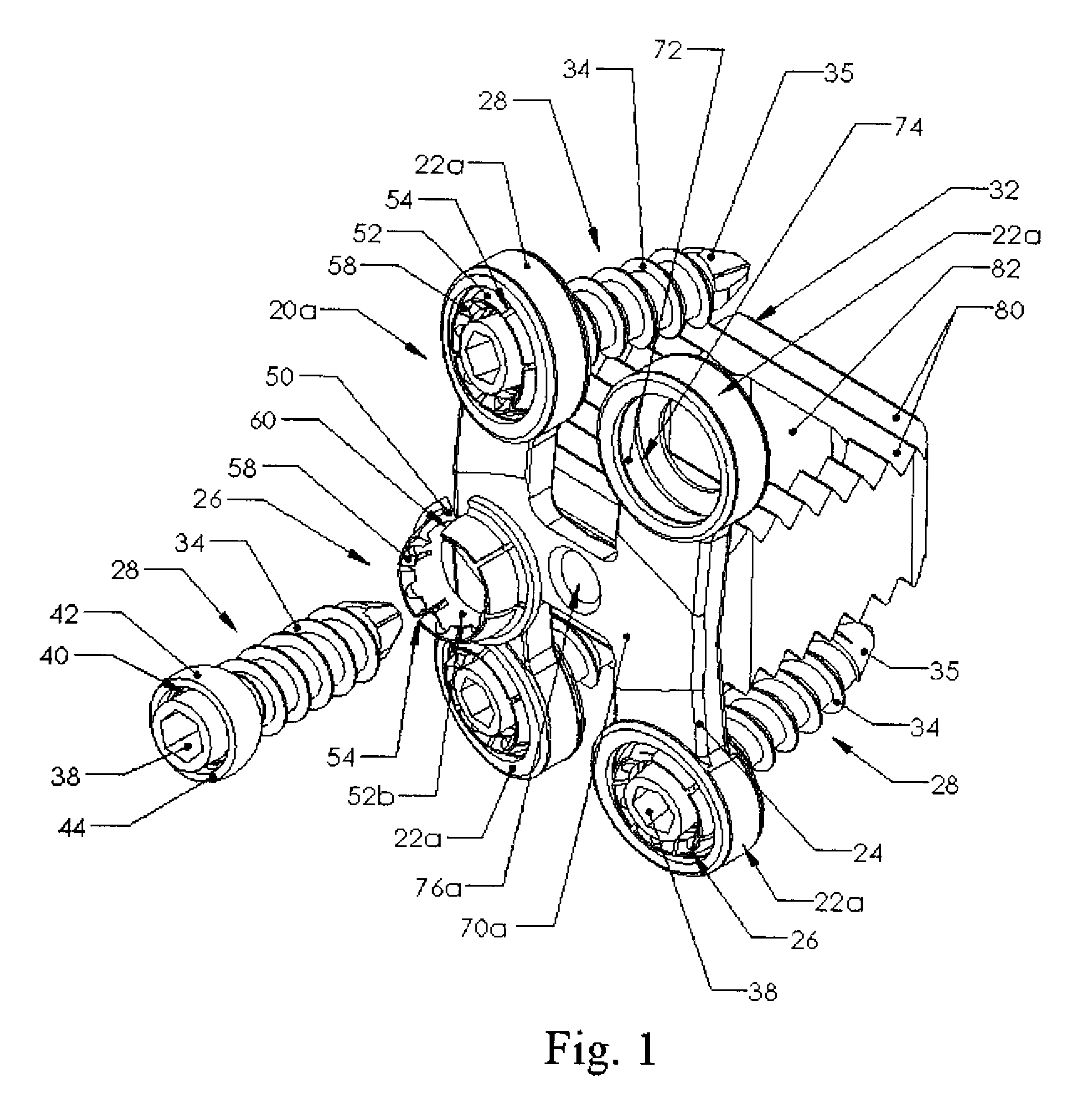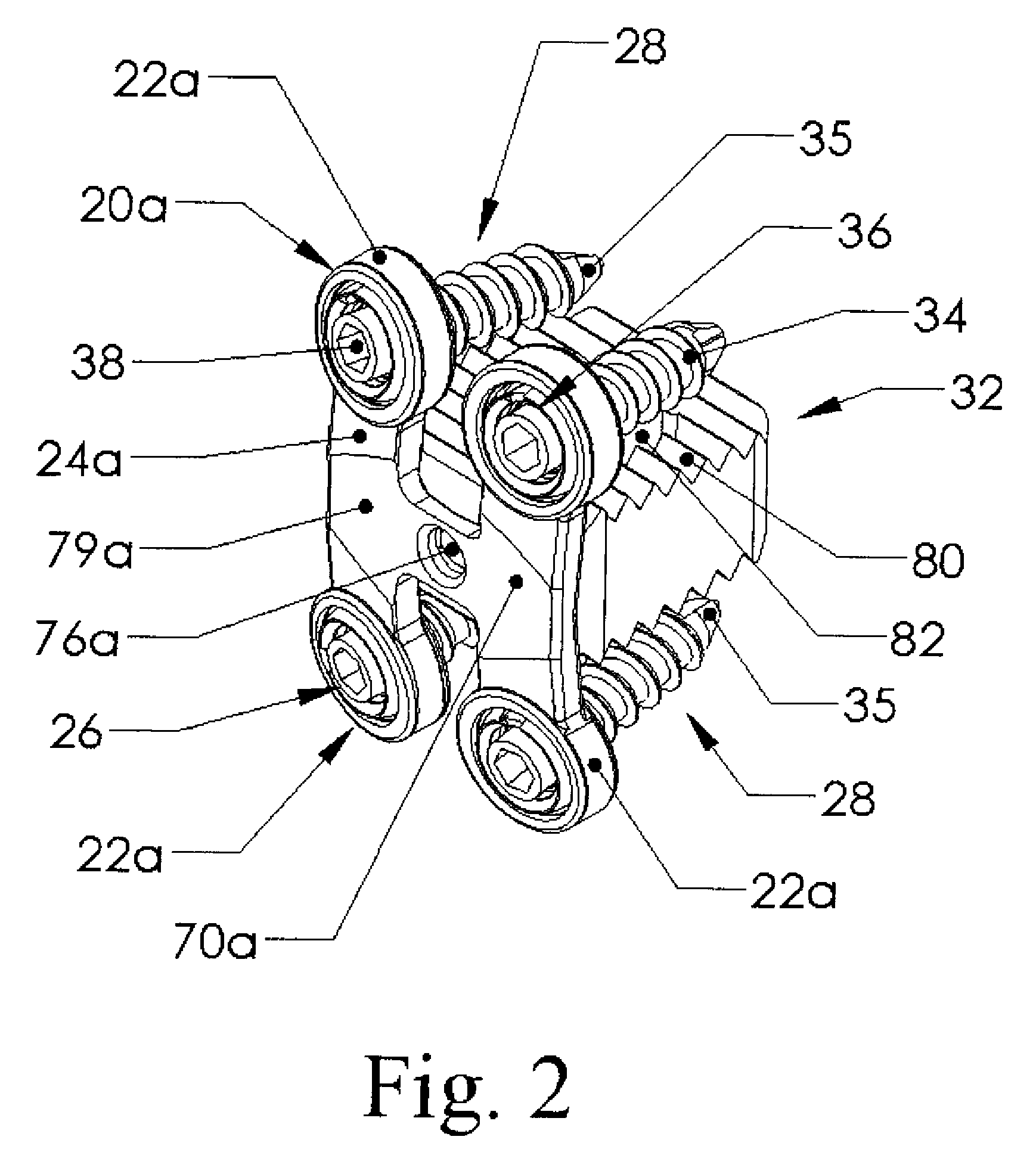Spinal fixation device
a fixation device and spine technology, applied in the direction of ligaments, prostheses, osteosynthesis devices, etc., can solve the problems of affecting the healing effect of the spine, so as to reduce the irritation of the abutting and adjacent tissu
- Summary
- Abstract
- Description
- Claims
- Application Information
AI Technical Summary
Benefits of technology
Problems solved by technology
Method used
Image
Examples
Embodiment Construction
[0097]One Level H-Shaped Fixation Plate
[0098]Referring to FIGS. 1-5, a bone fixation plate 20a has a generally H-shape with four sockets 22a, one at each end of the legs 24a of the H-shaped plate 20a. A bushing 26 fits within each socket 22. A bone screw 28 fits through each bushing and threads into vertebrae 30 to fasten the plate to the vertebrae 30. A vertebral body replacement 32 is fastened to the plate 20a and fits between adjacent vertebrae 30. The vertebral body replacement 32 is optional. Moreover, the fixation plate may or may not have a mount for the vertebral body replacement and may or may not have a graft attachment mount. The fixation plate 20a is believed suited for use with cervical vertebrae C2 through T1, and is believed especially suitable for C5-C6 fixation. This is referred to as a one-level fixation plate fixing two adjacent vertebrae 30 and one intervening disc.
[0099]Referring to FIGS. 1 and 6-7, the bone screw 28 is made of stainless steel, titanium or other...
PUM
 Login to View More
Login to View More Abstract
Description
Claims
Application Information
 Login to View More
Login to View More - R&D
- Intellectual Property
- Life Sciences
- Materials
- Tech Scout
- Unparalleled Data Quality
- Higher Quality Content
- 60% Fewer Hallucinations
Browse by: Latest US Patents, China's latest patents, Technical Efficacy Thesaurus, Application Domain, Technology Topic, Popular Technical Reports.
© 2025 PatSnap. All rights reserved.Legal|Privacy policy|Modern Slavery Act Transparency Statement|Sitemap|About US| Contact US: help@patsnap.com



